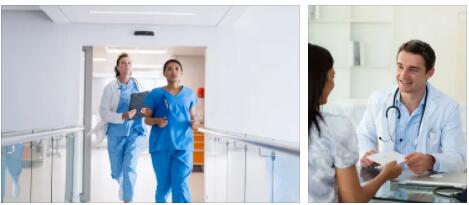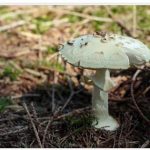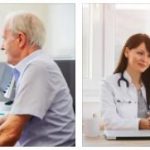Rothmund-Thomson syndrome is a genetic skin disease. Its inheritance is autosomal recessive.
What is Rothmund-Thomson Syndrome?
Rothmund-Thomson syndrome (RTS) is one of the genetic skin diseases. This leads to a pronounced poikiloderma, especially in the facial area, which is associated with orthopedic and ophthalmological complaints. There is also an increased risk of developing certain cancers. For diffuse b-cell lymphoma definition, please visit electronicsmatter.com.
The term Rothmund-Thomson syndrome goes back to the description of two doctors. This took place for the first time in 1836 by the German ophthalmologist August von Rothmund (1830-1906). In 1936, the English physician Matthew Sydney Thomson (1894-1969) published two papers dealing with hereditary poikiloderma (poikiloderma congenitale).
This disease is the same as the diseases described by August von Rothemund. For this reason it was later named Rothmund-Thomson Syndrome. Rothmund-Thomson syndrome is one of the rare diseases. Up until 2014, only 300 cases of illness were registered. The syndrome runs in families, which is considered typical of hereditary diseases.
Blood relatives or small communities are primarily affected. There is a balance between the two sexes in terms of the number of diseases. However, due to the low number of cases, no precise information can be given. Furthermore, no particular ethnic group is particularly affected by Rothmund-Thomson syndrome. The carrier frequency of the mutation is not known.
Causes
In medicine, Rothmund-Thomson syndrome is divided into the sub-forms RTS-1 and RTS-2. It has not yet been clarified what causes RTS-1. RTS-2 can be attributed to a heterozygous mutation originating in the RECQL4 gene. The affected gene encodes a helicase.
The most common mutation is the nonsense mutation. Defects in the RECQL4 gene are the cause of Rothmund-Thomson syndrome in between 60 and 65 percent of all patients. Both RTS-1 and RTS-2 types are inherited in an autosomal recessive manner.
Symptoms, Ailments & Signs
A typical feature of Rothmund-Thomsons syndrome is the rash on the face that cannot be overlooked, which is called poikiloderma. This rash is the main symptom of the genetic skin disease. Poikiloderma also distinguishes the disease from RAPADILINO syndrome.
Other characteristics of Rothmund-Thomson syndrome are sparse scalp hair, the frequent absence of eyelashes or eyebrows, short stature, skeletal malformations, juvenile cataracts and the occurrence of a radial club hand. Furthermore, the affected persons age prematurely and develop a predisposition to cancer.
The symptoms differ between RTS-1 and RTS-2. With RTS-1, poikiloderma, ectodermal dysplasia and juvenile cataracts occur in the eyes. Patients with subtype RTS-2 also suffer from poikiloderma. In addition, there are congenital deformations of the bones and an increased risk of developing osteosarcoma, malignant bone tumors, in adolescence. Skin cancer can also occur later in life.
The malformations of the skeleton are noticeable in Rothmund-Thomson syndrome, among other things, by a saddle nose, a radial club hand or a prominent forehead. In some cases, however, they can only be detected by x-rays.
Diagnosis & course of disease
When it comes to diagnostics, a distinction must also be made between the two forms of Rothmund-Thomson syndrome. No molecular genetic triggers could be found for the development of RTS-1. For this reason, the diagnosis depends on the presenting symptoms. For this purpose, a special evaluation table was created, which is used to collect the different symptoms of the disease.
Scores can be used by the examining physician to determine if RTS-1 is present. If RTS-2 is suspected, it is possible to detect the mutation in the RECQL4 gene by performing a genetic test. This is usually also the detection of RTS-2. The presence of Rothmund-Thomson syndrome should be considered when patients have osteosarcoma. A differential diagnosis must be made for RAPADILINO syndrome and Baller-Gerold syndrome, since mutations in the RECQL4 gene are also found in these diseases. Rothmund-Thomson syndrome takes a different course.
Despite their visible premature aging process, the patients have a relatively normal life expectancy, provided that no malignant cancer is present. Some patients are at increased risk of developing secondary malignancies. In these cases, the prognosis depends on the quality of cancer screening and cancer treatment. If osteosarcoma develops, the 5-year life expectancy of patients is between 60 and 70 percent.
Complications
People with Rothmund-Thomson syndrome suffer from a number of different skin problems. These complaints have a very negative effect on the aesthetics, so that many of those affected feel uncomfortable and suffer from inferiority complexes or reduced self-esteem. It can also cause depression or other psychological problems. Especially in children, Rothmund-Thomson syndrome can lead to bullying or teasing.
Short stature and various malformations of the skeleton also occur. Patients suffer from limitations in movement and, in some cases, the development of bone tumors. Skin cancer can also develop due to illness and possibly significantly reduce the life expectancy of the affected person. In many cases, the parents or relatives are also affected by the symptoms of Rothmund-Thomson syndrome and also suffer from psychological problems.
Since there is no causal treatment for the syndrome, only symptomatic treatment can be carried out. There are no complications. However, those affected depend on the transplantation of stem cells to defeat the cancer. A completely positive course of the disease cannot usually be achieved.
When should you go to the doctor?
Since Rothmund-Thomson syndrome is a hereditary skin disease with familial prevalence, contact with a doctor is inevitable from an early age. However, the facial poikiloderma associated with the disease is not the only symptom that makes life difficult for those affected.
People with Rothmund-Thomson Syndrome also suffer from orthopedic or ophthalmological sequelae. Affected people of both sexes also have a higher probability of developing cancer. However, the two subtypes of Rothmund-Thomson syndrome occur comparatively rarely. No more than 300-320 cases are documented worldwide.
Given the rarity of Rothmund-Thomson Syndrome, it is comparatively difficult to even find a specialist doctor who can diagnose Rothmund-Thomson Syndrome. Differentiation from other syndromes with similar symptoms is necessary. Medical treatments are indispensable in most cases, even if there are no chances of recovery. Rothmund-Thomson syndrome can only be treated symptomatically. Specialists and medical specialists from various disciplines will strive for close cooperation.
The cooperation of dermatologists, orthopaedists, ophthalmologists, surgeons or oncologists is the best way to help those affected to improve their quality of life.
Treatment & Therapy
There is currently no therapy for the cause of Rothmund-Thomson syndrome. Because of this, treatment is limited to relieving symptoms. Since the symptoms are considered to be extremely complex, it is advisable to have the patient treated in an interdisciplinary manner. This means that the therapy is carried out by doctors from different disciplines. In the case of Rothmund-Thomson syndrome, these include surgeons, orthopedists, ophthalmologists, oncologists, and dermatologists (skin doctors).
Part of the symptomatic therapy is an annual ophthalmological examination, treatment of telangiectasias and radiological examinations to check for osteosarcoma. Stem cell transplantation represents a possible novel therapy option. It is still in clinical trials and has only been carried out on two patients so far. One patient underwent allogeneic bone marrow transplantation. In the other case, the treatment was carried out using umbilical cord blood stem cells.
Prevention
Unfortunately, it is not possible to take preventive measures against the onset of Rothmund-Thomson Syndrome. The condition is one of the hereditary diseases, the cause of which is still largely unknown.
Aftercare
Follow-up care for Rothmund-Thomson syndrome depends on the subtype of the disease and its course, as well as the chosen treatment measures and the patient’s constitution. Generally, during follow-up, the various symptoms are reviewed and next steps are discussed. Surgery is often a significant burden for the patient.
During aftercare, the surgical scars are checked to determine the success of the treatment. In addition, patients are encouraged to rest. In long-term illnesses, treatment with painkillers may be necessary. In addition, patients sometimes need psychological support. Part of the aftercare is also information about advances in new therapy methods such as stem cell transplantation or bone marrow transplantation, which have been successfully carried out in some patients so far.
In addition, the follow-up includes a routine examination of the various bodily functions that have been affected by the cancer. If no complications occur, the patient can then be discharged. Since this is an extremely rare condition that can only be treated symptomatically, close medical monitoring is recommended for the patient even after recovery. Follow-up care for Rothmund-Thomson syndrome is carried out by a dermatologist, orthopaedist, ophthalmologist, oncologist or surgeon, depending on the symptoms.
You can do that yourself
Since Rothmund-Thomson syndrome is associated with an increased risk of cancer, the person affected should examine their body independently at regular intervals for irregularities or abnormalities in the skin. In addition to medical visits for medical examinations, it is advisable in everyday life to seek the help of fellow human beings in order to clarify areas that are difficult to access for possible changes in the skin’s appearance.
Since the genetic disease already shows abnormalities in the first years of life, the growing child should be informed about the existing disease and the further course at an early stage. In dealing with the disorder on a daily basis, it is important to avoid sudden situations and unpleasant surprises. Therefore, the immediate social environment should also be informed about the existing health impairment. Since there are visual changes, strengthening self-confidence is important in the child’s development and growth process.
Since surgical interventions are often used to improve the situation, mental support for the child is just as important as strengthening the immune system. To cope with an operation, the organism needs defenses. Mental strength can be built up in cooperation with a psychotherapist. In addition, the therapies offered help to be able to emotionally process the challenges of the disease. In some cases, parents should also consider seeking psychotherapeutic treatment.









